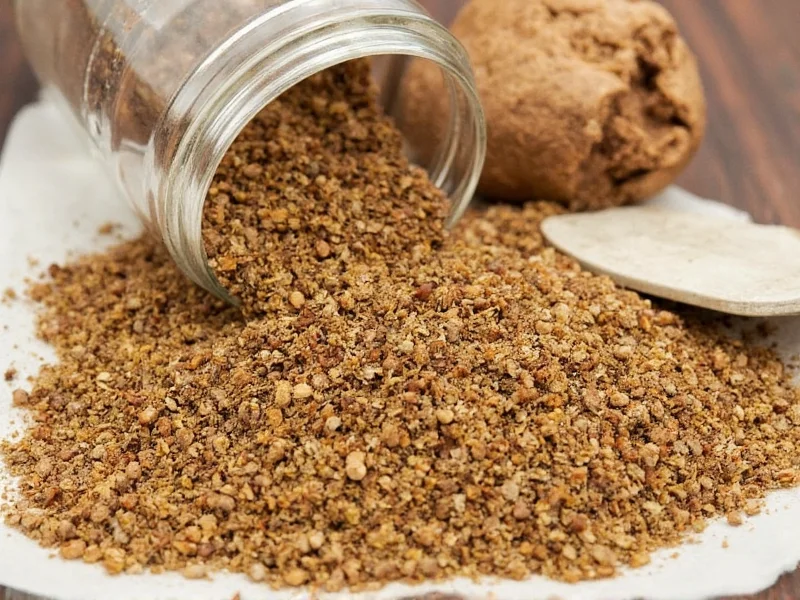Understanding what truffle seasoning actually contains is crucial for home cooks and professional chefs alike. While genuine truffle products use actual truffle pieces, many affordable options rely on natural or artificial flavorings to achieve that coveted truffle essence. This distinction significantly impacts both flavor profile and culinary applications.
What Exactly Is Truffle Seasoning?
Truffle seasoning refers to any product designed to impart truffle flavor to dishes. These come in several forms:
- Truffle salt - Sea salt blended with truffle pieces or truffle aroma
- Truffle oil - Typically olive oil infused with truffle compounds
- Truffle powder - Dehydrated truffle pieces mixed with starches or other carriers
- Truffle butter - Butter compound with truffle flavoring
The quality varies dramatically between products labeled as truffle seasoning. High-end versions contain actual truffle pieces (usually Tuber melanosporum for black truffle or Tuber magnatum for white truffle), while more affordable options use truffle aroma compounds to simulate the flavor.
Truffle Seasoning vs. Real Truffles: Setting Expectations
Many home cooks mistakenly believe truffle seasoning contains significant amounts of actual truffles. The reality is quite different:
| Characteristic | Real Fresh Truffles | Commercial Truffle Seasoning |
|---|---|---|
| Primary Ingredients | Actual truffle fungus | Base ingredient + truffle aroma compounds |
| Flavor Complexity | Complex, nuanced, earthy | Simplified, often one-note |
| Price per ounce | $50-$200+ | $5-$20 |
| Shelf Life | 3-10 days | 6-24 months |
| Best Culinary Use | Raw applications, finishing | Cooking, seasoning during preparation |
The distinctive aroma of real truffles comes from volatile sulfur compounds that degrade quickly when heated. Most commercial truffle seasonings use synthetic 2,4-dithiapentane to mimic this aroma because it remains stable during cooking—a key difference when considering how to use truffle seasoning properly.
How to Use Truffle Seasoning Effectively
Understanding proper truffle seasoning application transforms ordinary dishes. Follow these professional chef recommendations for best results:
Best Dishes for Truffle Seasoning
Certain foods naturally complement truffle flavor profiles:
- Potatoes - Mashed potatoes, roasted potatoes, or french fries
- Eggs - Scrambled eggs, omelets, or frittatas
- Pasta - Especially simple preparations like tagliatelle
- Risotto - Added at the end of cooking
- Cream-based sauces - The fat carries truffle flavor effectively
Truffle Seasoning Dos and Don'ts
Avoid these common mistakes when working with truffle seasoning:
- DO add truffle oil or salt near the end of cooking for maximum aroma impact
- DON'T use excessive heat with truffle oil (it degrades above 120°F/49°C)
- DO pair with simple dishes that won't overpower the delicate truffle notes
- DON'T expect authentic truffle flavor from products listing 'truffle flavor' without actual truffle content
- DO store truffle products in cool, dark places to preserve volatile compounds
Creating Your Own Truffle Seasoning
For those seeking more authentic flavor without the premium price of fresh truffles, homemade truffle seasoning offers a middle ground. This simple recipe yields excellent results:
Basic Homemade Truffle Salt
Ingredients:
- 1 cup flaky sea salt
- 1 small black truffle (about 0.5 oz)
- 1 tablespoon truffle oil (optional for stronger flavor)
Method:
- Clean truffle gently with a soft brush under cold water
- Finely grate truffle into the salt using a microplane
- Mix thoroughly and store in an airtight container
- Add truffle oil if using and mix again
- Let cure for 48 hours before using for optimal flavor infusion
This homemade version contains actual truffle pieces, providing more complex flavor than most commercial products. The curing process allows the salt to absorb the truffle's volatile compounds.
Storage and Shelf Life Considerations
Proper storage significantly extends the usable life of truffle seasoning products:
- Keep truffle oil in dark glass bottles away from light and heat
- Store truffle salt in airtight containers to prevent moisture absorption
- Refrigerate opened truffle oil to slow degradation (use within 2-3 months)
- Truffle powder typically lasts 6-12 months when stored properly
- Freeze fresh truffle scraps for later use in homemade seasoning
Signs your truffle seasoning has degraded include diminished aroma, off-flavors, or visible mold (in oil-based products). Unlike fresh truffles, quality truffle seasonings shouldn't develop ammonia-like odors when spoiled—they simply lose potency.
Understanding Truffle Seasoning Labels
Reading product labels helps determine what you're actually purchasing. Look for these key indicators:
- 'Made with real truffles' - Should list truffle percentage (typically 0.5-5%)
- 'Truffle aroma' - Usually means synthetic flavor compounds
- Ingredient order - First ingredients are most prevalent
- Expiration date - Truffle compounds degrade over time
- Storage instructions - Proper storage preserves volatile compounds
Products listing 'Tuber melanosporum' or 'Tuber aestivum' contain actual black truffle, while 'Tuber magnatum' indicates white truffle content. Be wary of products that simply say 'truffle flavor' without specifying the source.
Common Truffle Seasoning Misconceptions
Several myths persist about truffle seasoning that affect how people use these products:
- Myth: All truffle oil contains real truffles
Reality: Most commercial truffle oils use synthetic aroma compounds - Myth: Stronger smell means better quality
Reality: Overpowering aroma often indicates artificial flavoring - Myth: Truffle seasoning works well in all dishes
Reality: It complements specific foods and overwhelms others - Myth: Expensive truffle seasoning always contains real truffles
Reality: Price doesn't guarantee real truffle content—check ingredients
Professional chefs often prefer modestly priced truffle salt with actual truffle content over expensive oils with artificial flavoring for most applications. The key is understanding what you're purchasing and how to use it appropriately.











 浙公网安备
33010002000092号
浙公网安备
33010002000092号 浙B2-20120091-4
浙B2-20120091-4